“What are ‘hot pants’?” I asked, after seeing a Hot Pants Competition advertised in the local town gala programme in July 1971.
I was disappointed to learn that they were very short shorts. I didn’t have a pair (I was ten), and I wasn’t sure whether I was missing out by being limited to the “regular” children’s fancy dress competition.
My inner Mary Whitehouse1 now looks back and thinks how tawdry it was for girls as young as 15 to line up to be objectified. “To enter competition see Steward at the Arena in the Park.” Hmmm.
There was plenty else on offer. Colliery brass bands, a Pram and Beer Race2, athletics, a model aircraft display, a ladies’ football match, dog and rabbit shows (not together), Punch and Judy, tug-o-war (I remember being on my dad’s team and the pile-up as we crashed to the ground, defeated), a pea and pie stall (after 8.30pm) and a fireworks display. My sister won a prize in the associated No Litter and Dumping Campaign Children’s Poster Competition.
There was the vaguest of nods to health and safety:
But in the programme’s advertising, more objectification:
“Why pick on me? The printers of this programme draw your attention to their obsession…”
(Obsession with boobs, yeah, got it!)
“… with printing problems…” Oh, haha! The good old days, when businesses could ply their wares with any old sexist nonsense.
Then there’s the advert for “the Town’s No. 1 Nyte Spot”, The Birdcage, promising Top DJs and “Dolly Go Go’s”.
I could only imagine what The Birdcage “Nyte Spot” was like inside, with its “exciting lighting” and “fabulous decor” (there were rumours of a palm tree). My friend’s mum was a barmaid there. I loved seeing her apply black flicky eyeliner and backcombing her hair when she was preparing for a shift.
Were “Dolly Go Go’s” like Pan’s People, the dance troupe from my favourite TV show, Top of the Pops? Or like the young female audience members invited to dance on the stage, who were so often shown from an “upskirt” camera angle. (That week’s UK number one was Chirpy Chirpy Cheep Cheep by Middle of the Road, and hot pants and those camera angles both featured on that week’s TOTP.) Or maybe they were like the scantily-clad models chasing Benny around the park at the end of The Benny Hill Show, which attracted upwards of 21 million viewers each week.
Not knowing made The Birdcage sound more mysterious.
I had friends who led me astray that coming year, or at least challenged my boundaries. When the town’s new sports centre was under construction, they dared each other to swim in the filthy water in the hole that would become the swimming pool. Of course, I joined in, until we were chased off the site. Another time, we crept back and conquered our vertigo, climbing the ladder that the builders left in place leading to the partially-constructed sports centre roof, where we could take in the views towards Sheffield.
At one friend’s house, while her parents were at work, we found her dad’s “mucky magazines” under his mattress. I was startled by the women displaying full bushes and ample breasts and rather appalled to realise that one day I might look like that.
I wasn’t used to nakedness. I was expected to wear pyjamas in bed, no matter how hot it was. If I had to use the bathroom while my mother was in the bath, she strategically covered herself with modesty flannels. My eye was drawn instead to her deep vertical tummy scar from giving birth three times by Caesarean section.
As a child, the only other woman I’d seen unclothed was Aunt Dorothy when I visited my mum’s parents in Birkenhead (I was about five years old). I slept on a camp bed in her room.
I’d pretended to be asleep, but if I squinted I could see Aunt Dorothy getting undressed. She was a large lady and held herself in with a boned corset, as many women still did in the 1960s. It took ages to undo, hook by hook by hook, and there were the laces, too. It was a formidable, uncomfortable looking garment. Dorothy’s underclothes seemed interminable: apart from the corset, a vest, bra, suspenders and stockings. It was all very peculiar.
She had a ceramic chamber pot under the bed, as the toilet was outside the main house. Sometimes I’d wake up in the night to see her squatting over it, and quickly close my eyes again in case she spotted me.
Once, when I was bored, I decided to investigate Dorothy’s room more thoroughly. There were stockings in the drawers, nothing interesting. She caught me and said that Nana would be “very vexed” if she found out I’d been snooping. It was the first time I’d heard the word “vexed”. To stem my curiosity, she showed me what was in the wardrobe. Day dresses, which were all very plain and of a kind. She had a clerical job in Liverpool and rarely wore anything other than office wear.
So on the one hand there were women who wore many layers – like my grandmothers, my aunts, my mother.
And on the other, there were women who didn’t wear very much at all.
I wasn’t sure which kind I wanted to be.
Thank you for the warm response to last week’s piece Childhood 1960s Style about the letters my mum wrote to her parents on family life in the late 1950s/early 1960s. She would have been delighted to know her words have reached a new audience 60+ years on.
Thanks for reading. Clicking the heart, sharing and commenting all help other people find my writing.
I love to hear your thoughts, so please do comment if you’re able.
Mary Whitehouse (1910–2001) was a well-known teacher and campaigner against permissive society in the UK. The first president of the National Viewers’ and Listeners’ Association.
A Pram and Beer Race was a pub-crawl, drink at each pub en route, with adults dressed as babies, in prams pushed by other adults (yes, really!). This one was three miles, from the Cross Keys at Hoyland Common to Elsecar Park where the Gala was.





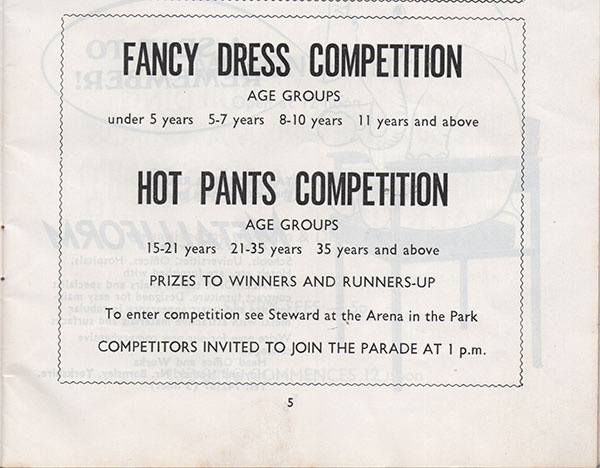

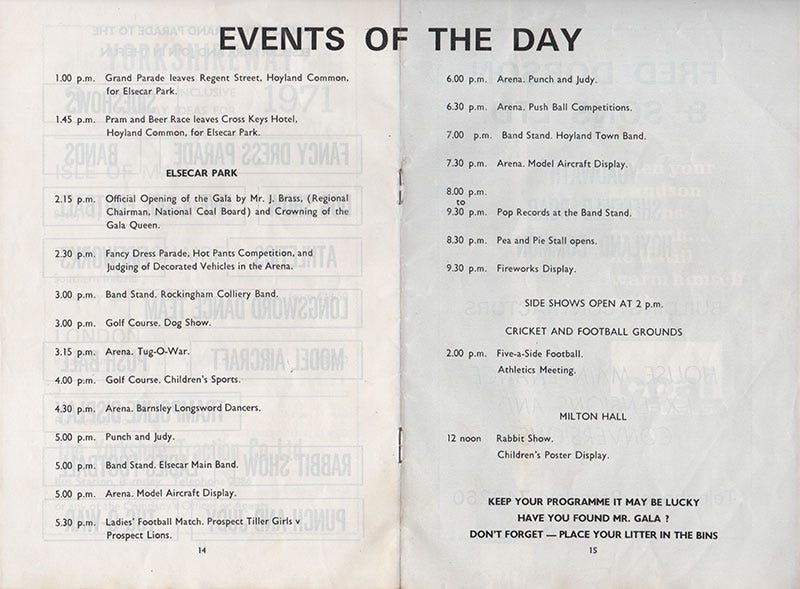
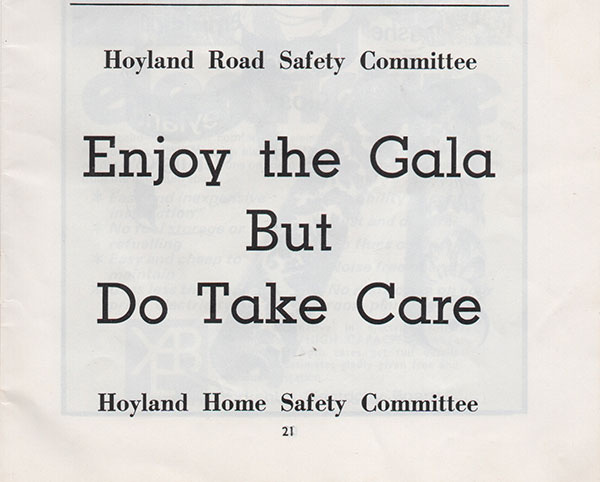
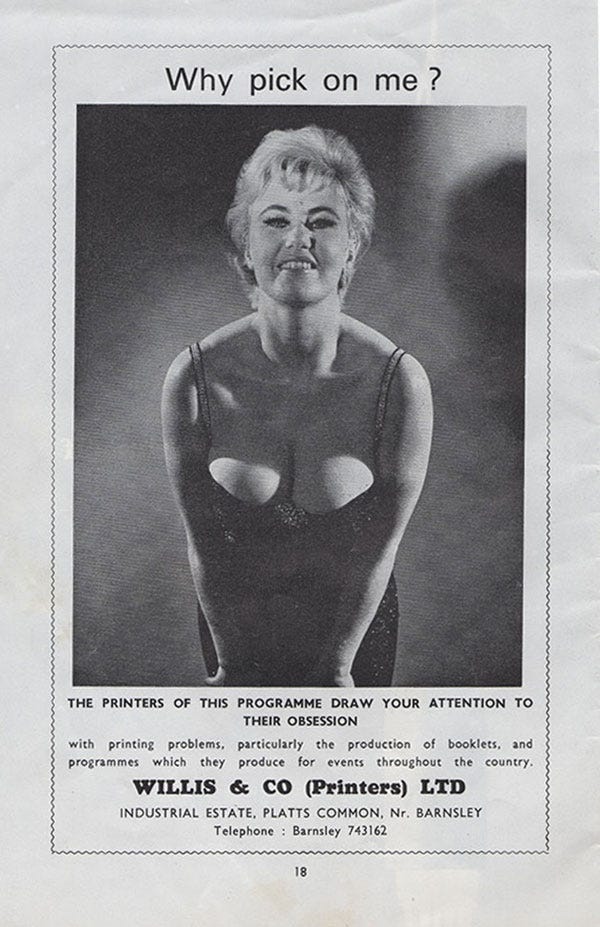
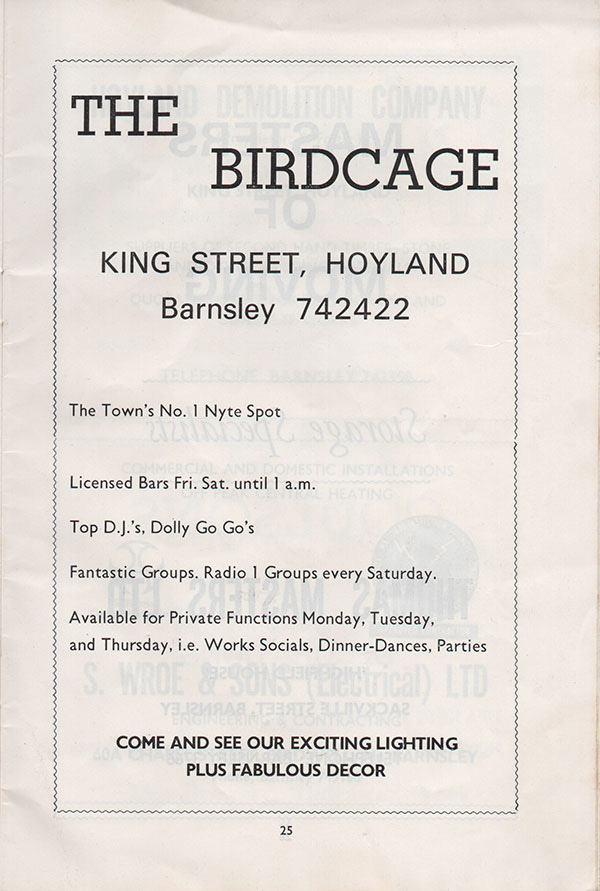

I was 17 in 1971 and have to admit that by then we’d totally embraced, in fact probably kick-started, the craze for hot pants.
I had a button front pink gingham mini dress with hot pants underneath that my mum probably thought achieved an element of modesty. I’d have bought it from Martin Ford or Chelsea Girl in Sutton High St, with my wages as a Saturday girl in Woolworths. Footwear was those crippling wooden Dr Scholl sandals.
In fact, looking back I’m amazed that my parents managed to turn a blind eye to this ever-increasing exposure. Of course it was all about to change when I started nurse training in London and that was me wrapped up in starch for the next four years.
I remember feeling so grossed out by Page 3, pretty much from puberty onwards. I loathed Benny Hill too, that horrible little man in the raincoat creeped me out. There are a lot of things about the 70s and 80s I miss, but the normalisation of female objectification is not one of them. These days, of course, lots of women objectify themselves for money (and worse). Yay, progress! (Sarcasm font enabled).